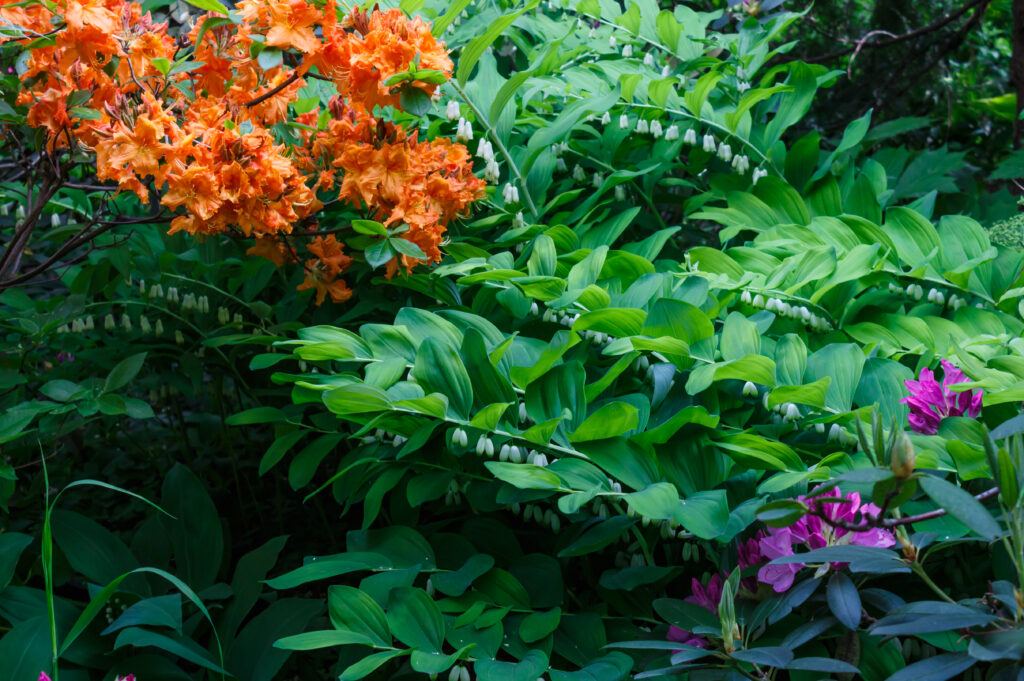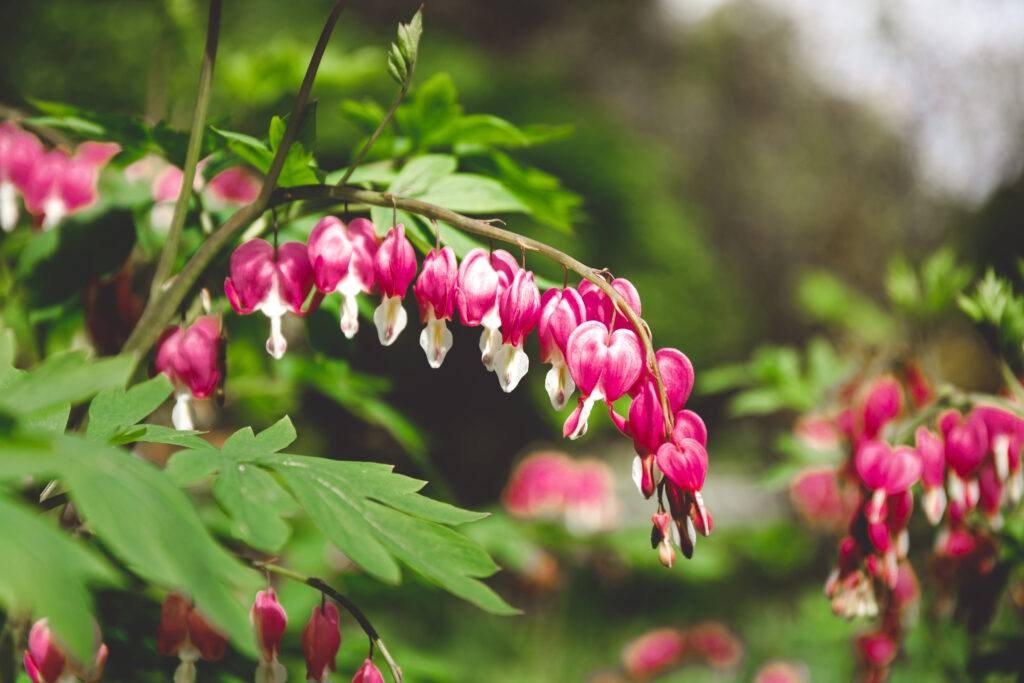
Shade gardens can be a delightful surprise in any landscape, especially if you’ve been handed a yard that’s more about shadows than sunshine. But what exactly is a shade garden? It’s important to understand what shade conditions. Shade gardens fall into three main categories: full shade, partial shade, and dappled light. Full shade areas get less than three hours of direct sunlight per day, while partial shade spots see between three to six hours. Dappled light, on the other hand, is like that speckled sunlight you might see filtering through a tree canopy—gentle and ever-shifting.
Understanding how much sunlight an area receives is vital for choosing the right plants. Too much sun will scorch plants adapted to lesser light, while too little will leave them struggling to grow. For example, ferns thrive in full shade, embracing those damp, cool spots beneath trees or beside structures. Conversely, some flowering plants prefer partial shade, soaking up those morning rays, while taking a break from the scorching afternoon sun. Knowing your shade helps in both plant selection and garden layout. Gardening in the shade doesn’t mean settling for a dull yard—plenty of plants, including many suited to low light conditions, thrive without direct sun.
Picking plants wisely based on shade type is a bit like pairing food and wine—get it right, and the whole experience sings. Research plants that naturally grow under the conditions your space offers. Look around your neighborhood or local parks to see what’s thriving in similar spots. Many nurseries mark plants with the amount of shade they can tolerate, making the selection process easier. A trick I like is to observe my space throughout the day, noting how the light shifts and changes. This helps in understanding and adapting to my garden’s micro-environment.
The Enchanting Allure and Challenges of Shade Gardening

Shade gardens hold a special place in the gardening world. While they might not boast the dazzling colors seen in sun-drenched flower beds, they offer a serene, tranquil beauty that’s just as captivating. The textures and subtle hues found in shade-tolerant plants create a calming, lush atmosphere—perfect for a peaceful corner where one can unwind under the whispering leaves.
But let’s be real, shade gardening isn’t without its hurdles. Limited light can mean slower plant growth, and not every species will flourish in these conditions. It’s common to worry about sparse growth or lack of vibrant colors associated with more sunlit spaces. This is where focusing on foliage comes into play. Broad, interesting leaves, as seen in hostas or the delicate fronds of ferns, add visual interest that shifts with the light throughout the day, rewarding patience with subtle beauty. A very colorful option, coleus, addsinstant color with its vivid foliage and works beautifully in a shade-friendly cottage garden.
There’s also the issue of moisture. Many shaded areas retain moisture longer, which can be a blessing—saving on watering—but also a curse if poor drainage leads to root rot. To work around this, selecting plants that love moist environments or installing proper drainage solutions can make a significant difference. Mulching organically helps retain moisture without waterlogging, providing a balanced habitat for plants to thrive.
Regular maintenance is another critical aspect. While shade gardens are more forgiving in terms of water requirements, they do demand attention in different ways. Regular pruning, managing weeds, and ensuring proper aeration can help maintain a healthy garden under these conditions. One tip is to focus on the understory—clearing out the dead foliage and debris regularly keeps pests at bay and ensures plants get enough air and nutrients.
Benefits of Shade Gardens: Creating Cool Havens for Nature and You

Shade gardens aren’t just about aesthetic appeal; they serve practical purposes that can transform your outdoor space into a refreshing refuge. One of the standout benefits is their natural cooling effect. It’s refreshing to stroll around those shady places that offer a respite from the sun.
These gardens also become mini-ecosystems, fostering biodiversity. The cool, moist conditions attract an array of wildlife, from birds and helpful insects to small mammals. The gentle rustle and soft sounds can add a layer of calm to your space, promoting an overall sense of wellbeing. This increased biodiversity isn’t just a boon for animal life; it promotes healthier plant growth by improving soil and ensuring a balanced garden ecosystem.
Many people underestimate spaces that aren’t bathed in sunlight, often leaving them neglected or underused. But that’s where shade gardens shine the most—making the most of these overlooked areas. Transforming a dull corner into a vibrant, lush garden not only boosts your property’s aesthetic value but also enhances usability. Using a mix of textures and heights—and considering showstoppers like Limelight hydrangea for partial shade—will add dimension to your garden. Suddenly, that previously uninviting patch becomes the go-to spot for a quiet read or a morning coffee.
Additionally, by cultivating a shade garden, you’re participating in an eco-friendly practice that contributes to environmental sustainability. Many native, shade-tolerant plants like bleeding heart, coral bells, and hosta, among others, provide food and shelter for bees.
So, if you’re considering putting that shaded patch of yard to use, remember you’re not just planting a garden, you’re creating a sanctuary for both nature and yourself.
Top 10 Plants for Shade Gardens

Choosing the right plants is a game changer for any shade garden. When you’re working with limited light, it becomes essential to find species that naturally thrive in these conditions. Here’s a roundup of the top ten shade-loving plants you might want to consider, each with its own charm and unique requirements.
- Hostas stand out with their lush, broad leaves and varied shades of green and blue, sometimes even rimmed with white for a pop of contrast. They’re hardy, easy to grow, and perfect for full to partial shade
- Ferns bring a touch of the wilderness with their intricate fronds and vibrant green. They thrive in moist, shaded areas, making them perfect companions under trees or in damp corners.
- Coral Bells, with their bright, bell-shaped flowers and colorful foliage, offer a bold contrast. They prefer partial shade but can also manage spots with dappled sunlight.
- Astilbe’s feathery plumes add a soft burst of color and texture. These perennials enjoy moist, shaded habitats, providing eye-catching blooms in purple, white, and red.
- Japanese Forest Grass can add a graceful, flowing quality to your garden with its arching blades. It prefers dappled sunlight or partial shade, bringing movement and elegance to the scene.
- Bleeding Hearts are a classic favorite, known for their heart-shaped pink or white flowers. These thrive in cool, shady environments, adding a romantic, old-world charm to any garden.
- Brunnera, or Siberian Bugloss, is precious for its heart-shaped leaves and tiny bright blue flowers, thriving in partial shade and adding a delightful touch with its paint-like patterning.
- Solomon’s Seal might not catch fire with bright colors but its elegant, arching stems and rows of soft white flowers bring a subtle sophistication to shaded areas.
- Lungwort, with its interestingly speckled leaves and small blossoms in blue, white, or pink, is a shade-lover that adds texture to garden beds, flourishing best in partial to full shade areas.
- Finally, Toad Lilies surprise with their exotic-looking blooms resembling orchids, best planted in fall for late-season interest in partial or full shade.
For each plant, consider the specific light, soil, and water requirements. While many shade plants prefer moist conditions, it’s essential to ensure proper drainage to prevent waterlogging. Mulch can help retain the right amount of moisture. Regular pruning and care, like eliminating dead foliage, keep the garden vibrant and healthy.
Cultivating these plants might seem like a challenge with the lighting constraints, but the rewards—a personalized sanctuary and a constantly evolving canvas of textures and colors—are well worth the effort.

Creating a shade garden can be a rewarding challenge, as it opens up opportunities to grow unique and lush plants that thrive in low-light conditions. Hostas, ferns, and astilbes are excellent choices, offering varied textures and colors to brighten darker spots. Incorporating shade-loving ground covers like lamium or sweet woodruff can add depth, while seasonal blooms from plants like bleeding hearts or hellebores provide year-round interest. Proper soil moisture and organic mulch are key to maintaining a healthy shade garden, as many of these plants prefer cool, damp environments. With thoughtful planning, even the shadiest corner can become a vibrant, tranquil retreat.
Thanks, AJnaval for your interest in my article on shade gardens. Many don’t realize you can grow lush plants as you said. And many of them bloom as well.
Hello Kathryn!
This article is a treasure trove for anyone with a shady garden! I especially appreciated the breakdown of different light conditions—full shade, partial shade, and dappled light—as it really helped me understand what plants will thrive in my space. I’ve struggled with finding plants that do well in low-light areas, but this guide has given me a solid starting point.
The tips on moisture management were also eye-opening. I hadn’t thought about the fact that shaded areas can retain moisture longer, which can lead to root rot if not managed properly. I’m now more mindful of drainage and mulching to keep my plants healthy.
Thank you for sharing this insightful guide—it’s exactly what I needed to transform my shaded garden into a thriving, lush space!
Angela M 🙂
Angela,
I’m happy you enjoyed my article on shade gardens, and I hope you will feel inspired to fill your shady places with great plants for low-light spaces.
Great article! I especially enjoyed the section on the benefits of shade gardens—it was truly insightful. I do have a question, though: is it possible to create a functional and beautiful shade garden on a balcony, especially where space and natural light are limited? If yes, what are the best practices, plant selections, and design ideas to make it work?
Ibrahim,
Thank you for your comments about shade garden plants. Yes, you can grow them on a balcony with not a lot of space and limited natural light. You can utilize containers to hang off your balcony railing and using wall-mounted planters for height. You can add trellises for vining plants that produce colorful blooms. The plants can climb up the trellises which will add texture and light. I hope these tips will help you create a balcony shade garden.
My friend loves plants, so I’ve learned a lot from her about picking the right ones for shade gardens. Hostas are a must with their broad, vibrant leaves, and ferns add that wild, jungle vibe. Coral Bells bring a pop of color, while Astilbe’s feathery blooms are a total showstopper. Japanese Forest Grass flows beautifully, and Bleeding Hearts add a romantic touch with their heart-shaped flowers.
Brunnera’s tiny blue flowers are so delicate, and Solomon’s Seal is all about understated elegance. Lungwort’s speckled leaves are quirky, and Toad Lilies bring an exotic twist with their orchid-like blooms.
With a little care—good drainage, mulch, and pruning—you can turn any shady spot into a lush, peaceful garden!
Linda,
Thank you for your comments. I love that you highlighted some of my favorite shade loving plants, and I can tell you have a real appreciation for them.
I really enjoyed reading this—shade gardens often get overlooked, but you’ve highlighted just how rewarding and beautiful they can be. I appreciate the way you broke down the different kinds of shade because it’s easy to assume “shade” is just one category when it actually varies so much throughout the day and season.
One point I found especially helpful was the focus on foliage over flowers. It’s true that when you can’t rely on big, showy blooms, the textures and shapes of leaves can become the real stars of the garden. Hostas, ferns, and coral bells are some of my personal favorites because they always look lush and layered.
I also liked that you mentioned drainage—it’s one of those hidden challenges people don’t expect in shady spots, especially around trees or fences. Mulching and choosing moisture-tolerant plants really does make a huge difference.
Overall, this was a fantastic overview. Thanks for showing how a shady corner can be transformed into such a peaceful, wildlife-friendly retreat!
Linda,
I’m so glad you enjoyed my article. I think most people don’t realize the how beautiful shade gardens can be with the right plants and planning.
What a beautifully curated list of shade-loving plants! I especially appreciated how you highlighted hostas for their lush foliage and begonias for their vibrant blooms—even in deep shade. The inclusion of ferns and astilbes bringing texture and contrast really resonated with me. I’m curious—have you had success with any groundcovers like Vinca or Brunnera in darker spots, and if so, which varieties have been the most reliable in terms of spread and bloom? I’d love to know more about which of these thrive best under dense tree canopies, as I’m planning a new woodland garden area.
Hanna,
Thank you for your comments, and I am glad you enjoyed my article on shade garden plants.
I have grown annual vinca-it is very easy to grow, and adds beautiful color. It can take both full sun and partial shade, but I don’t know if it would do well under dense tree canopies.
Brunnera is a wonderful plant that can be planted in both part shade to full-shade, and it does well in woodland settings. It is not a fast grower so you might need to be patient while it fills in. It also prefers cool summers and doesn’t do well if hot and humid zones.